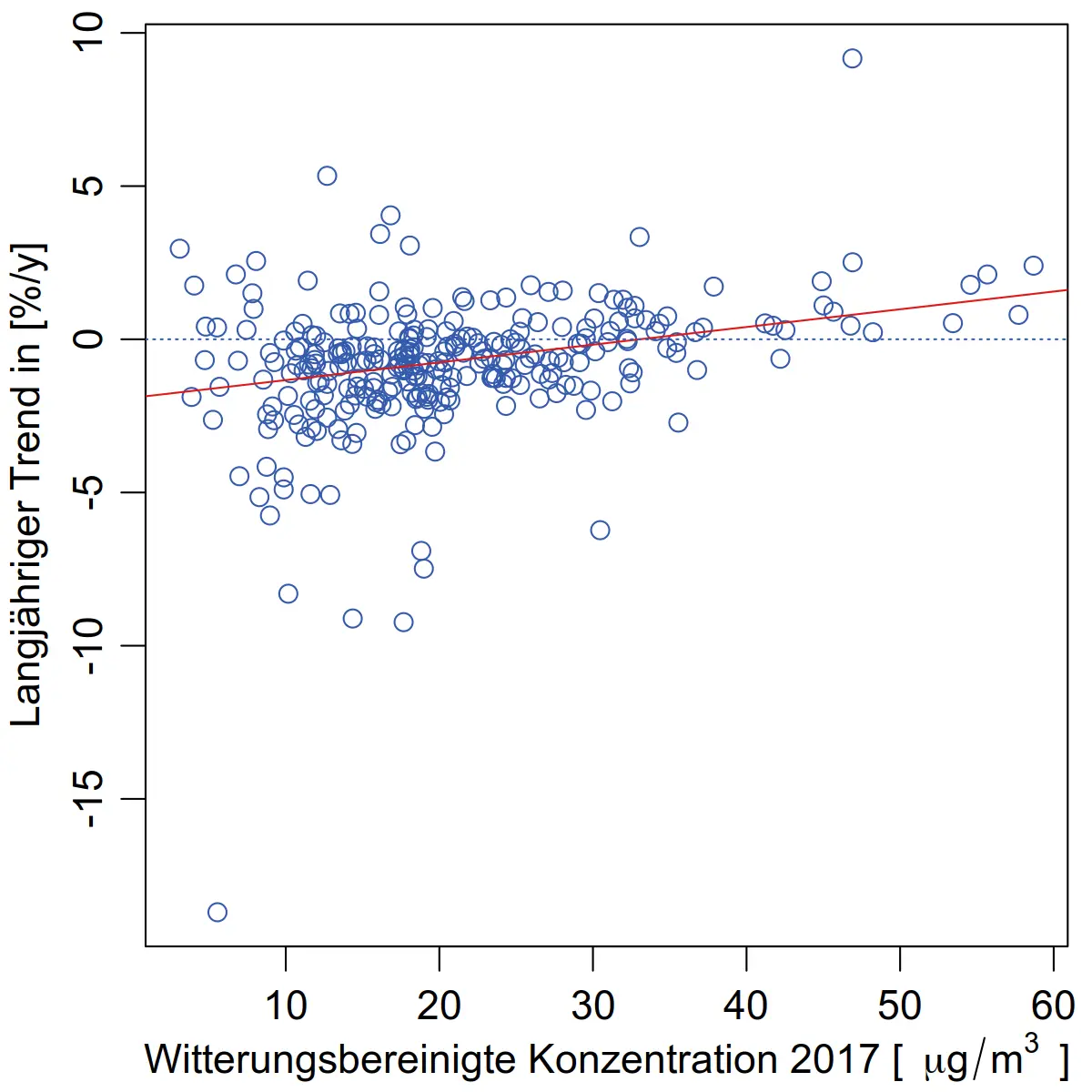Trend analysis of nitrogen dioxide concentrations in Eastern Switzerland
Description
Nitrogen dioxide (NO2) is a component of air which, when too high in concentration, causes harmful effects to plants, over-fertilizes sensitive ecosystems, irritates eyes, respiratory system and skin. In addition, NO2 and volatile organic compounds form the educts that generate the pollutant ozone (O3). Therefore, Swiss Confederation has defined thresholds for ambient concentrations of NO2, which have to be continously monitored.The cantons of Zurich, Schaffhausen, Thurgau, St. Gallen, both Appenzell, Glarus, Graubünden and the Principality of Liechtenstein have joined forces in the organization "Ostluft" to monitor ambient concentrations of air pollutants. In the area of Ostluft, NO2 passive samplers have been exposed at nearly 300 locations since up to 30 years.Ambient NO2 concentrations measured at a given location at a given time depend primarily on the amount of nitrogen oxides emitted in the surrounding area, the distance of the sources to the measurement location and current weather conditions. Ambient concentrations reflect the development of the direct effects of nitrogen oxides on humans and environment. Since weather depends on season and year of measurements and thus shows large variation over time, ambient concentrations varies much more strongly within and between years than variation of emissions suggests. For tracking the evolution of local emissions, weather effects must therefore be assessed and removed from the evolution of ambient concentrations.IDP was mandated by Ostluft to evaluate these extensive data. The weather-adjusted evolution of NO2 concentrations was of particular interest in order to draw conclusions about the success of the measures introduced to reduce NO2 emissions in diesel and gasoline vehicles, oil, gas and wood heating and combustion processes in industry.
Key data
Projectlead
Dr. René Locher
Project partners
OSTLUFT
Project status
completed, 09/2017 - 11/2019
Institute/Centre
Institute of Data Analysis and Process Design (IDP)
Funding partner
OSTLUFT
